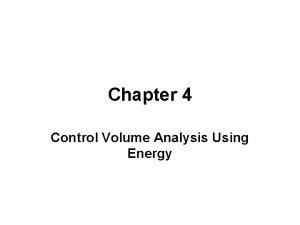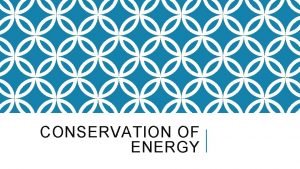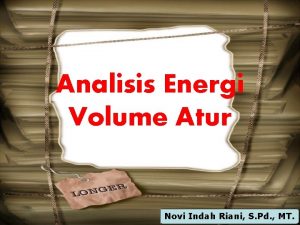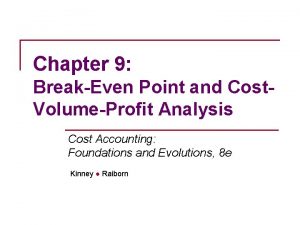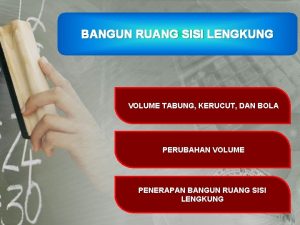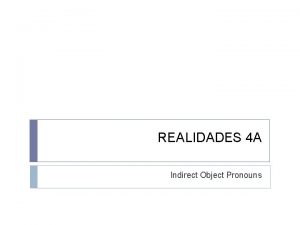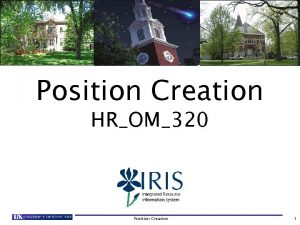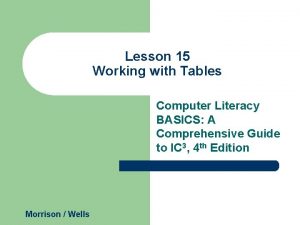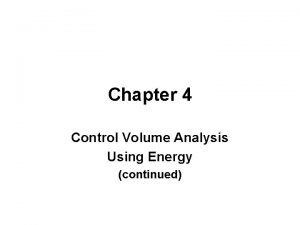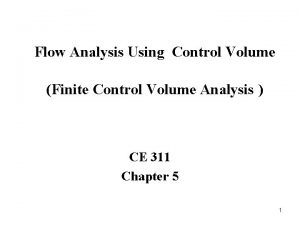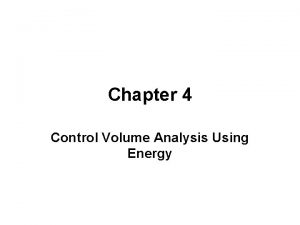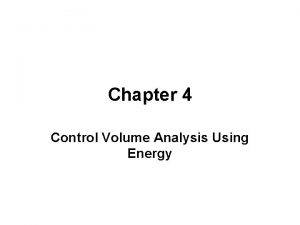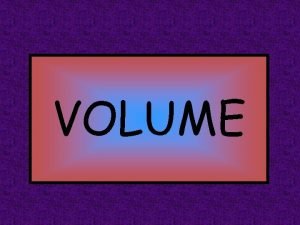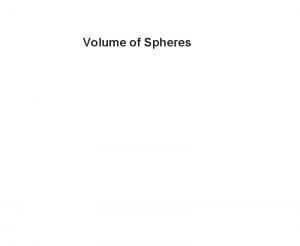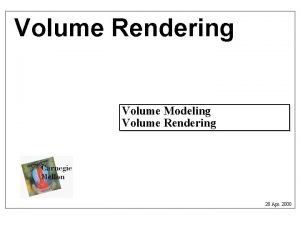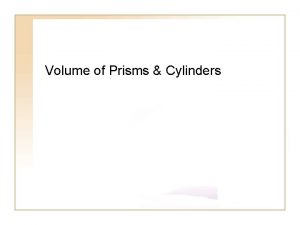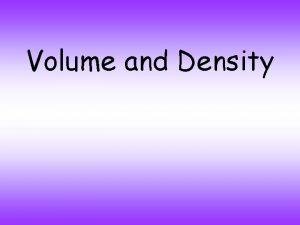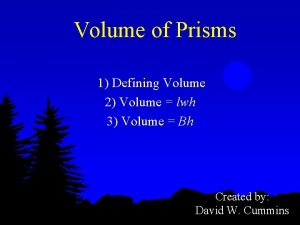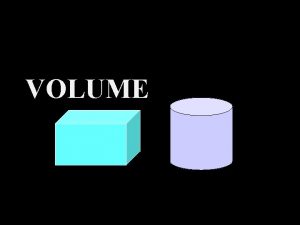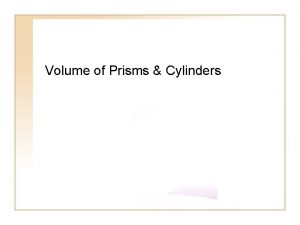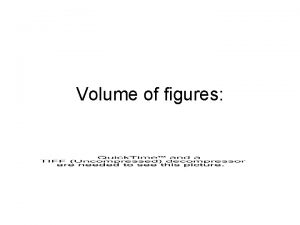Chapter 4 Control Volume Analysis Using Energy continued


























- Slides: 26

Chapter 4 Control Volume Analysis Using Energy (continued)

Learning Outcomes ►Distinguish between steady-state and transient analysis, ►Distinguishing between mass flow rate and volumetric flow rate. ►Apply mass and energy balances to control volumes. ►Develop appropriate engineering models to analyze nozzles, turbines, compressors, heat exchangers, throttling devices. ►Use property data in control volume analysis appropriately.

Energy Rate Balance time rate of change of the energy contained within the control volume at time t net rate at which energy is being transferred in by heat transfer at time t net rate at which energy is being transferred out by work at time t net rate of energy transfer into the control volume accompanying mass flow

1 2 Consider a system similar to what the components that we’ve just analyzed in class. Assume ideal conditions initially Look up state 2 properties 4 3



1 2 Consider a system similar to what the components that we’ve just analyzed in class. Assume ideal conditions initially Look up state 2 properties 4 3

Turbines ►Turbine: a device in which power is developed as a result of a gas or liquid passing through a set of blades attached to a shaft free to rotate.

Turbine Modeling Eq. 4. 20 a ►If the change in kinetic energy of flowing matter is negligible, ½(V 12 – V 22) drops out. ►If the change in potential energy of flowing matter is negligible, g(z 1 – z 2) drops out. ►If the heat transfer with surroundings is negligible, drops out.

1 2 Consider a system similar to what the components that we’ve just analyzed in class. Assume ideal conditions initially Look up state 2 properties 4 3 Look up state 3 properties in order to determine W of Turbine


1 2 Consider a system similar to what the components that we’ve just analyzed in class. Assume ideal conditions initially Look up state 2 properties 4 3 Look up state 3 properties in order to determine W of Turbine

1 2 Consider a system similar to what the components that we’ve just analyzed in class. Assume ideal conditions initially Look up state 4 properties 4 3

Heat Exchangers ►Direct contact: A mixing chamber in which hot and cold streams are mixed directly. ►Tube-within-a-tube counterflow: A gas or liquid stream is separated from another gas or liquid by a wall through which energy is conducted. Heat transfer occurs from the hot stream to the cold stream as the streams flow in opposite directions.

4 3

Q rejected 4 3


1 2 Consider a system similar to what the components that we’ve just analyzed in class. Assume ideal conditions initially Look up state 4 properties 4 Now one can solve for Q rejected 3

Compressors and Pumps ►Compressors and Pumps: devices in which work is done on the substance flowing through them to change the state of the substance, typically to increase the pressure and/or elevation. ►Compressor : substance is gas ►Pump: substance is liquid

Compressor and Pump Modeling Eq. 4. 20 a ►If the change in kinetic energy of flowing matter is negligible, ½(V 12 – V 22) drops out. ►If the change in potential energy of flowing matter is negligible, g(z 1 – z 2) drops out. ►If the heat transfer with surroundings is negligible, drops out.

1 2 Consider a system similar to what the components that we’ve just analyzed in class. Assume ideal conditions initially Look up state 1 properties 4 3


1 2 Consider a system similar to what the components that we’ve just analyzed in class. Assume ideal conditions initially Look up state 1 properties 4 Now one can solve for W pump 3

Pump State 1 To turbine, state 2 Heat Exchangers – Boilers too

Power Cycle ►Applying the closed system energy balance to each cycle of operation, DEcycle = Qcycle – Wcycle (Eq. 2. 39) ►Since the system returns to its initial state after each cycle, there is no net change in its energy: DEcycle = 0, and the energy balance reduces to give Wcycle = Qin – Qout (Eq. 2. 41) ►In words, the net energy transfer by work from the system equals the net energy transfer by heat to the system, each per cycle of operation.

Power Cycle ►The performance of a system undergoing a power cycle is evaluated on an energy basis in terms of the extent to which the energy added by heat, Qin, is converted to a net work output, Wcycle. This is represented by the ratio called thermal efficiency.
 Control volume analysis using energy
Control volume analysis using energy Energy energy transfer and general energy analysis
Energy energy transfer and general energy analysis Energy energy transfer and general energy analysis
Energy energy transfer and general energy analysis Section 2 describing energy worksheet answers
Section 2 describing energy worksheet answers Part 4 forms of energy continued
Part 4 forms of energy continued Reynold’s transport theorem
Reynold’s transport theorem Control volume vs control surface
Control volume vs control surface Mass and energy analysis of control volumes
Mass and energy analysis of control volumes Control volume analysis
Control volume analysis Section 3 using thermal energy worksheet answer key
Section 3 using thermal energy worksheet answer key Chapter 8 section 3: cellular respiration
Chapter 8 section 3: cellular respiration Break even price formula
Break even price formula Assumptions of cvp analysis
Assumptions of cvp analysis What is stroke volume
What is stroke volume End diastolic volume meaning
End diastolic volume meaning Solute
Solute Lung capacity
Lung capacity Volume tabung kerucut
Volume tabung kerucut Large volume parenterals means
Large volume parenterals means Chapter 7 energy conservation of energy
Chapter 7 energy conservation of energy Romeo and juliet act 2 prologue meaning
Romeo and juliet act 2 prologue meaning How does juliet regain her parents' favor
How does juliet regain her parents' favor Capítulo 4a indirect object pronouns (continued answers)
Capítulo 4a indirect object pronouns (continued answers) Continued abbreviation
Continued abbreviation Signal phrases
Signal phrases Table continued
Table continued Continued abbreviation
Continued abbreviation
